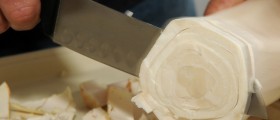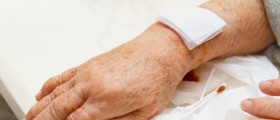
Some people are more tolerant to the sun and they can stay exposed to it even for a longer period of time, with consequences of overexposure being suntan or redness, but they rarely develop a rash. Others are more sensitive to the sun and they are more likely to suffer from sun rash. People with fair skin and red hair seem to be more prone to this problem.
Allergic Reaction to the Sun
Sun rash appears through small red bumps on the skin that are often very itchy and may be in the form of tiny blisters. They usually appear on the part of the body that is most exposed to the sun, like hands, arms, neck and face.
This rash can occur minutes or hours after the exposure to the sun. It can be mild and treated just like a mild sunburn. In more severe cases, the rash is more intense and wide-spread. Also, it may be combined with other symptoms like headache, nausea, fever and dizziness. Therefore, more severe cases of allergic reaction to the sun usually require medical care.
How to Treat a Sun Rash?
People who are prone to sun rash should stay away from the sun as much as possible, and when this is not possible they should cover all parts of the body with light clothes that allow the skin to breathe. The skin should always be protected with sun block products with a high sun protection factor, like SPF 85.
When sun rash occurs there are some steps to be taken that may alleviate its symptoms. The first thing to do is to make sure the rash is a result of sun exposure and not other factors, like orally ingested medicines, beauty products, food allergies and similar.
Sun rash often itches but it is vital not to scratch it. Scratching may cause further damage to the skin.
A Hydrocortisone cream can be applied to the affected skin to relieve the itching. Oral antihistamines are also effective, although most experts recommend topical creams because they have fewer side effects.
A cool wet washcloth applied to the area will bring comfort and relief for itching and redness and will accelerate healing.
The skin can be treated with Aloe vera gel or fresh Aloe vera juice. Products that are 100 percent Aloe vera are much better than others that contain additional ingredients, because certain ingredients may cause yet another unwanted skin reaction.
A bath with Epsom salt is highly recommended in case of a sun rash. It soothes the skin and promotes healing. The bath should be lukewarm and without any additional products like cleansers and lotions.
To conclude, there can be many possible reasons behind rashes on the skin. Yet, sun rashes are usually connected with exposure to sun rays, unless they are not sun rashes after all.
Because of the possibility that the rash is the result of serious health problems, it is necessary for the person to visit a doctor. The doctor will determine the seriousness of the problem.Purple Spots on the Skin
Causes for the occurrence of purple spots, appearing on the surface of the skin can be various and numerous.
First of all, this skin issue can occur due to hemorrhage, or damage to the walls of blood vessels in the skin. In the majority of cases, it develops after trauma to the skin.
However, some kind of strain, vomiting, and even violent coughing or intensive crying can cause rash on the skin, especially on the face or in the chest area, and most often in its upper part. Wearing tight clothes may cause this rash on the skin too.
Additionally purple spots on the skin often occur due some viral (smallpox, chickenpox and measles) or bacterial infections.
Purple spots on the skin are usually harmless and disappear after a few days. Nevertheless, the rash can be a sign of some serious diseases and a symptom of severe health conditions.
Such rash can be an indicator of low levels of platelets in the blood or signify health problems that are marked by blood clotting. Aplastic anemia can also be one of the causes. Some drugs and chemicals affect the selective reduction of megkaryocytes and, as a consequence of that, purple rash can appear too. Additionally, the rash may appear on the skin as a sign of immune system problems or a side effect of blood transfusion.
Finally, bear in mind that taking steroids and sulphonamides can also trigger purple spots on your skin, as well as a long-lasting use of steroids.
- www.nhs.uk/conditions/polymorphic-light-eruption/
- www.nhs.uk/conditions/heat-rash-prickly-heat/
- Photo courtesy of Garden State Hiker by Flickr: www.flickr.com/photos/elchode/5446790389

















Your thoughts on this
Loading...